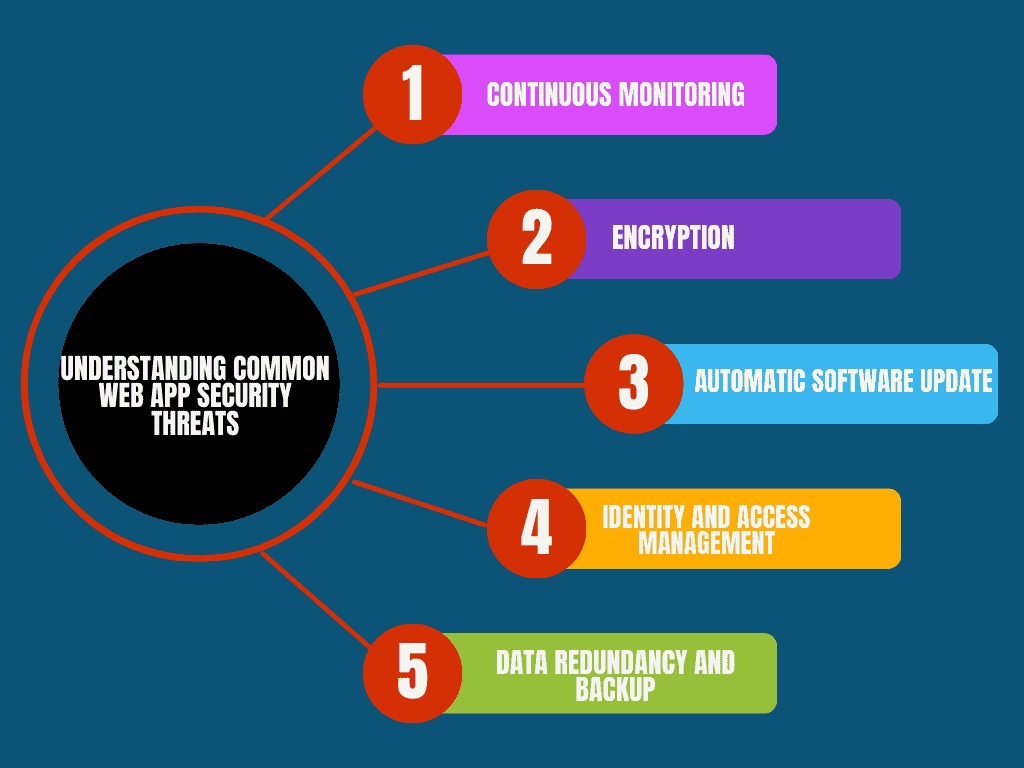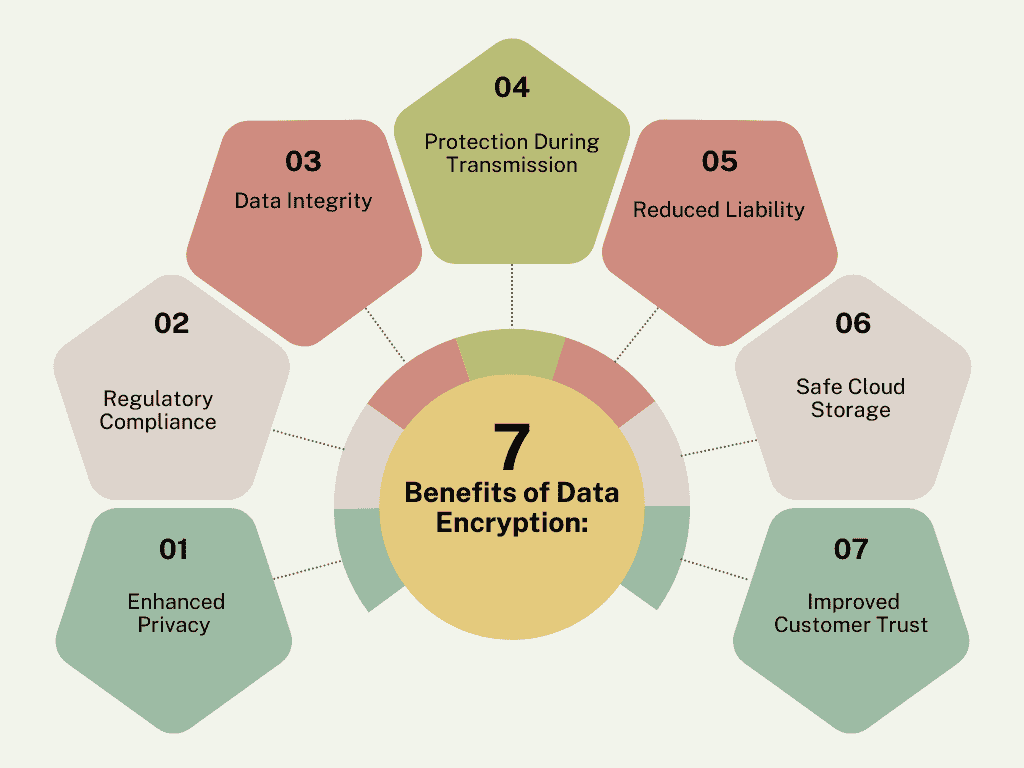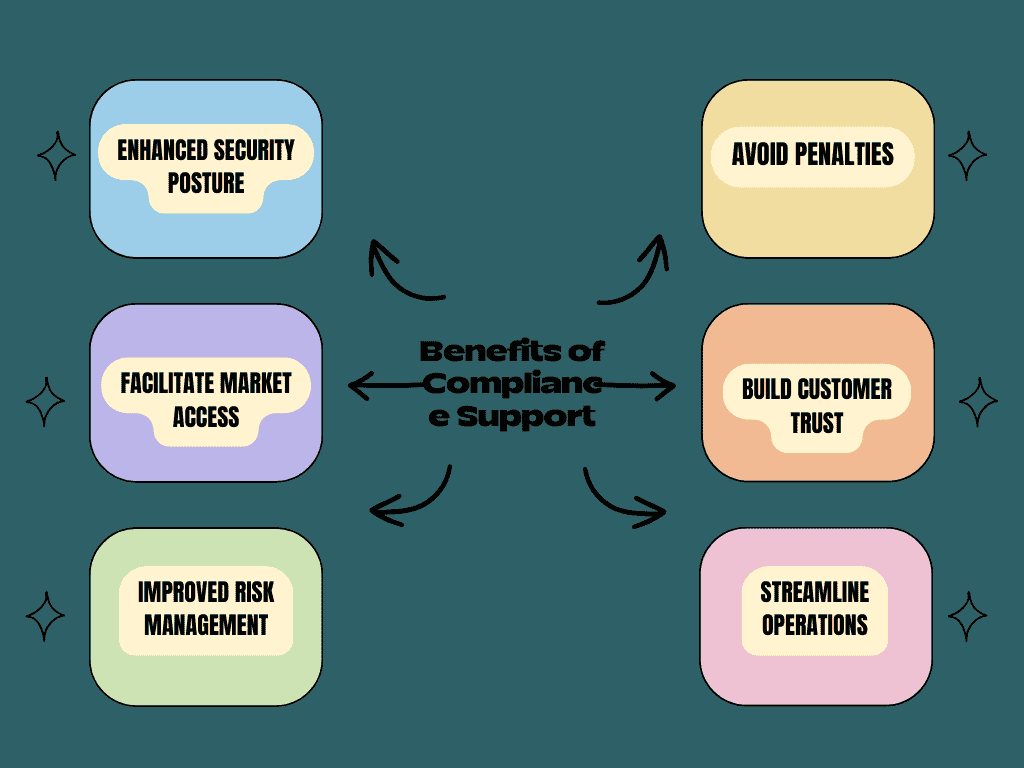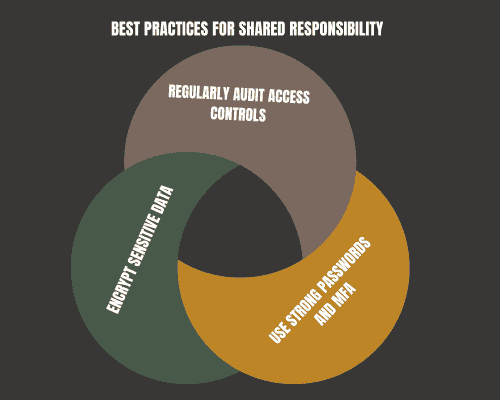With the rapid adoption of cloud computing, businesses are increasingly shifting their operations to public cloud platforms. The public cloud offers extensive benefits, especially when it comes to enhancing data security. In this article, we’ll explore how public cloud services provide robust security solutions and what these improvements mean for businesses.
1. The Role of Public Cloud Security in Modern Business
The role of public cloud security extends beyond basic data protection. As businesses increasingly rely on data to drive decisions, optimize processes, and improve customer experience, they must prioritize secure storage, processing, and analysis. Public cloud providers excel in offering solutions that protect data through physical and digital safeguards, which would be both costly and complex for businesses to establish independently.
Key Security Benefits

1 Continuous Monitoring: Public cloud services provide constant, real-time monitoring, allowing immediate insights into user activity and potential threats. This proactive approach enables cloud providers to detect and respond to unusual patterns swiftly, mitigating risks before they impact your data.
2 Encryption: Data encryption at both rest and in transit ensures sensitive information remains secure. By converting data into a coded format, cloud providers make it nearly impossible for unauthorized access, ensuring data confidentiality even in case of breaches.
3 Automatic Software Update: Cloud providers manage and deliver software updates as soon as new vulnerabilities are identified. These automatic updates keep your systems secure without requiring manual intervention, helping businesses stay ahead of evolving security threats.
4 Identity and Access Management (IAM): Public cloud services offer sophisticated IAM tools to control user access based on defined roles and permissions. By implementing multi-factor authentication (MFA) and granular permissions, cloud providers limit access to sensitive data, ensuring only authorized personnel can interact with critical resources.
5 Data Redundancy and Backup: To ensure data availability and protection, cloud providers maintain multiple copies of your data across geographically diverse data centers. This redundancy mitigates risks from physical failures, human errors, or malicious attacks, ensuring data resilience and disaster recovery capabilities.
Why Data Security Matters in Public Cloud
Data security goes beyond protecting sensitive information; it’s foundational to building trust and maintaining operational integrity. Breaches can lead to financial losses, damaged reputation, and legal issues, especially for companies handling sensitive data. Public cloud platforms, with their strong security frameworks, enable businesses to securely harness data while focusing on growth rather than infrastructure and security management.
2. Essential Security Features of Public Cloud Services
Public cloud providers offer multiple layers of security features designed to address specific data security needs. These features are purpose-built to counteract various cyber threats and ensure data integrity.
Data Encryption (In-Transit and At-Rest)
Encryption is fundamental to data security, and public cloud providers have made it a priority. When data is stored on cloud servers (at-rest) or transferred across networks (in-transit), it’s encrypted. This means data is converted into a coded form, making it inaccessible without a decryption key.
Benefits of Data Encryption:

1 Enhanced Privacy:
Encryption secures data from unauthorized access, preserving the confidentiality of sensitive information. By rendering data unreadable without a decryption key, it ensures privacy even in the event of a security breach.
2. Regulatory Compliance
Many regulatory frameworks, such as GDPR, HIPAA, and CCPA, mandate data encryption to protect sensitive information. Encryption supports compliance by preventing unauthorized access, helping organizations meet legal obligations and avoid penalties.
3. Data Integrity
Encryption maintains data integrity by providing assurance that data hasn’t been altered or tampered with. By using cryptographic techniques, encryption verifies data accuracy, ensuring it remains as originally intended.
4. Protection During Transmission
Encryption protects data during transmission over networks by encoding information, making it difficult for unauthorized parties to intercept or read data in transit. This is crucial for secure communications, particularly when dealing with remote access or third-party integrations.
5. Reduced Liability
Encrypted data reduces liability in case of a breach, as encrypted information is generally considered unusable or harmless without the decryption key. This added layer of security helps organizations minimize the potential impact of data breaches.
6. Safe Cloud Storage
By encrypting data stored in the cloud, organizations ensure that sensitive information remains protected even if cloud servers are accessed by unauthorized parties. This protection extends to backups and disaster recovery copies, securing data from unauthorized access.
7. Improved Customer Trust
Customers value privacy and security in their interactions with organizations. By using encryption, companies demonstrate a commitment to protecting customer data, fostering trust and enhancing their reputation in data security and privacy management.
3. Meeting Compliance and Regulatory Standards
For businesses in regulated industries such as healthcare, finance, and retail, meeting compliance standards is essential. Public cloud providers simplify compliance by offering built-in controls, certifications, and regulatory support that reduce the burden on businesses.
Global Compliance Standards
Public cloud providers adhere to strict global standards, supporting businesses in meeting compliance requirements without needing to implement additional infrastructure. For example:
- GDPR: Protects data privacy for EU citizens by enforcing strict data handling rules.
- HIPAA: Sets regulations for protecting sensitive patient data in healthcare settings.
- PCI-DSS: Standards for companies that process credit card information, ensuring customer data security.
Certifications and Protocols
Public cloud platforms undergo rigorous audits to maintain certifications like SOC 2, ISO/IEC 27001, and FedRAMP. These certifications assure businesses that providers meet high security and data protection standards, making it easier to comply with industry requirements.
Benefits of Compliance Support

1. Avoid Penalties
Compliance with regulations like GDPR and HIPAA helps businesses avoid significant fines and legal repercussions associated with non-compliance. Cloud providers help by ensuring data protection measures align with these standards, reducing the risk of penalties.
2. Build Customer Trust
By adhering to strict regulatory standards, businesses demonstrate a commitment to data privacy and security, fostering trust among customers and enhancing their brand reputation.
3. Streamline Operations
Compliance support simplifies complex regulatory requirements, enabling businesses to integrate these standards seamlessly into their workflows. This allows companies to focus more on core activities rather than navigating regulatory intricacies.
4. Enhanced Security Posture
Compliance standards often require strong security practices, such as data encryption and access controls. Cloud providers help businesses implement these measures, creating a more secure environment and reducing the risk of data breaches.
5. Facilitate Market Access
Many industries and regions have specific regulatory requirements for data handling. Compliance support enables businesses to enter new markets and industries, as it ensures they meet essential legal and security standards required for operation.
6. Improved Risk Management
By aligning with compliance standards, businesses can identify and mitigate potential risks more effectively. Compliance frameworks provide guidelines for risk assessment and management, helping organizations proactively address vulnerabilities.
4. Advanced Data Security Controls
Public cloud providers offer a range of controls that businesses can implement to protect data further. These include access control mechanisms, multi-layer authentication, and network security tools.
Role-Based Access Control (RBAC)
RBAC assigns access permissions based on roles rather than individual users. By limiting access to only what employees need, businesses reduce the risk of accidental or intentional data misuse.
Benefits of RBAC:
- Streamlined Permissions: Easy to manage and scale permissions based on roles.
- Minimized Data Exposure: Only necessary data is accessible, reducing the risk of leaks.
Multi-Factor Authentication (MFA)
MFA requires users to provide two or more verification factors before accessing sensitive information, adding a layer of security that is especially effective in preventing unauthorized access.
Benefits of MFA:

1. Enhanced Security
Multi-factor authentication (MFA) greatly enhances security by necessitating that users present several verification methods, thereby minimizing the likelihood of unauthorized access. This extra layer of security makes it more difficult for attackers to breach accounts, even if they obtain one form of credentials.
2. User-Friendly
Modern MFA solutions are designed to be user-friendly, integrating seamlessly into the login experience without adding unnecessary complexity. Options like biometric verification or app-based authentication ensure strong security without disrupting the user experience.
3. Compliance
Many data protection regulations, such as GDPR, HIPAA, and PCI-DSS, mandate or recommend the use of MFA for secure access. By implementing MFA, organizations can better meet these compliance requirements, helping to avoid regulatory penalties.
4. Reduced Risk of Credential Theft
MFA protects against common attacks like phishing and credential stuffing by requiring additional verification beyond passwords. Even if credentials are compromised, the additional authentication step helps safeguard accounts and sensitive information from unauthorized access.
Network Security Tools
Network security tools, including firewalls and Virtual Private Networks (VPNs), provide additional layers of protection, securing data as it travels across networks.
5. Cloud-Based Data Protection Solutions
Beyond preventive measures, public cloud providers offer tools for recovery and data loss prevention, ensuring data availability even in the event of a disaster or attack.
Backup and Disaster Recovery
Cloud providers allow businesses to create automated backups, protecting data from accidental deletion or cyberattacks. With disaster recovery solutions, companies can restore operations quickly, ensuring business continuity.
Benefits of Backup and Disaster Recovery:
- Reduced Downtime: Automatic failovers help minimize interruptions.
- Peace of Mind: Backup solutions prevent permanent data loss.
- Resilience: Disaster recovery systems keep businesses operational in emergencies.
Data Loss Prevention (DLP)
DLP solutions prevent unauthorized data sharing or movement, safeguarding sensitive information from being exposed or leaked.
Security Information and Event Management (SIEM)
SIEM tools aggregate and analyze data across the entire cloud environment, providing insights into potential security risks. By detecting anomalies in real-time, SIEM enables rapid response to potential threats.
6. Shared Responsibility Model: Understanding Security Roles
The shared responsibility model defines the security roles between cloud providers and customers, ensuring both parties contribute to maintaining a secure environment.
Cloud Provider Responsibilities
Cloud providers handle the physical security and maintenance of infrastructure, ensuring the integrity of the core systems businesses rely on.
Customer Responsibilities
Customers are responsible for managing their data and application security. This includes setting permissions, enforcing data encryption, and ensuring secure access protocols.
Best Practices for Shared Responsibility
To manage security effectively, businesses should:

- Regularly Audit Access Controls: Periodic reviews ensure that permissions remain accurate.
- Use Strong Passwords and MFA: These basic steps provide added layers of protection.
- Encrypt Sensitive Data: Encryption provides a critical layer of protection.
7. Overcoming Challenges in Public Cloud Security
Here are five strategies for overcoming challenges in public cloud security, including the three you’ve provided:

1. Managing Multi-Tenant Risks
Public cloud environments often operate on shared infrastructure, hosting multiple customers within the same physical space. Effective data isolation strategies, such as virtual private networks and robust access controls, are essential to prevent cross-tenant data leaks or breaches, ensuring that each tenant’s data remains secure.
2. Addressing Insider Threats
Insider threats remain a concern in cloud environments, especially with remote access capabilities. Utilizing Identity and Access Management (IAM) and advanced monitoring tools enables businesses to track and analyze employee activity, detecting anomalies and preventing potential insider threats through early intervention.
3. Breach Prevention Strategies
Cloud providers offer various security measures to safeguard against breaches, but businesses must also implement strong internal security policies. Regularly updating these policies, conducting employee training, and staying current with evolving threats help fortify defenses and minimize breach risks.
4. Data Encryption Practices
Encrypting data both at rest and in transit is critical to protecting sensitive information in the cloud. Cloud providers often offer built-in encryption tools, but businesses should manage their encryption keys securely to maintain control over data access, preventing unauthorized use.
5. Continuous Security Compliance Monitoring
Compliance with regulatory standards is a constant need in cloud security. Businesses should regularly audit cloud environments to ensure adherence to required standards like GDPR, HIPAA, or PCI-DSS. Automated compliance monitoring tools can help track changes and ensure that cloud infrastructure meets these standards consistently.
8. The Future of Public Cloud Security
Here are six key trends shaping the future of public cloud security:
- Zero Trust Architecture (ZTA): Traditional perimeter-based security models are evolving toward zero trust, which continuously verifies users and devices before granting access. This approach mitigates risks associated with compromised credentials and strengthens security across remote and distributed environments.
- AI-Driven Threat Detection: Leveraging AI and machine learning, future threat detection will analyze vast datasets to identify patterns and anomalies in real time. This shift allows for faster, more precise detection and response, essential in countering increasingly sophisticated threats.
- Data Privacy and Sovereignty: With data privacy regulations like GDPR becoming stricter, cloud providers will enhance region-specific storage and compliance tools to meet global requirements. Data sovereignty will play a significant role as countries implement local data storage mandates, compelling providers to adopt more localized solutions.
- Automated Incident Response: Automation will become critical in managing incidents effectively, enabling predefined responses that reduce response times. Automated playbooks for common threats will allow organizations to address vulnerabilities at scale, minimizing human error and improving resilience.
- Confidential Computing: This innovation encrypts data while in use, offering a secure processing environment that protects sensitive information. Confidential computing will become essential for businesses handling sensitive data in multi-tenant public cloud settings, providing a robust layer of security across industries.
- Quantum-Resilient Encryption: With quantum computing on the horizon, cloud providers are investing in quantum-safe encryption techniques. Preparing for a post-quantum world ensures long-term data protection against emerging computational capabilities, reinforcing trust in cloud services.
These advancements signify a future where public cloud security becomes more proactive, automated, and aligned with regulatory frameworks, safeguarding data integrity in a rapidly evolving digital landscape.
9 Difference between Public Cloud vs. On-Premises
| Feature | Public Cloud Security | On-Premises Security |
|---|
| Infrastructure Management | Managed by the cloud provider | Fully managed in-house, requiring dedicated IT resources |
| Scalability | Instantly scalable, allowing resources to grow as needed | Limited scalability; expanding requires new hardware and setup |
| Cost Structure | Subscription-based, with lower upfront costs | High initial setup costs, including hardware and maintenance |
| Data Encryption | Default encryption at-rest and in-transit | Requires manual configuration for comprehensive encryption |
| Compliance Support | Built-in support for major standards (e.g., GDPR, HIPAA) | Compliance management must be handled in-house |
| Threat Detection | Continuous monitoring with AI-driven threat detection | Manual or periodic monitoring; often less advanced analytics |
| Disaster Recovery | Automatic backups and recovery options built into the service | Requires dedicated infrastructure and backup processes |
| Access Management | Role-Based Access Control (RBAC) and Multi-Factor Authentication (MFA) provided | Requires in-house setup and enforcement of access protocols |
10 FAQs
What is the main advantage of public cloud security?
Public cloud security provides scalable, cost-effective protection with built-in tools like encryption, real-time monitoring, and compliance support, ensuring data safety without extensive infrastructure.
How does data encryption work in the public cloud?
Public cloud providers encrypt data both at rest (when stored) and in transit (when being transferred), making it unreadable to unauthorized users and protecting against breaches.
What is the shared responsibility model?
In the public cloud, providers manage infrastructure security, while customers control data and access management. This model ensures a balanced approach to data protection.
Is public cloud security compliant with regulations?
Yes, public cloud providers support compliance with global standards (e.g., GDPR, HIPAA), offering pre-configured tools to help businesses meet regulatory requirements.
How does public cloud security handle disaster recovery?
Public cloud services include automated backups and disaster recovery options, allowing data restoration and minimal downtime in case of unexpected events.
11 Conclusion
This article highlights how public cloud platforms like AWS, Microsoft Azure, and Google Cloud offer enhanced data security through encryption, Identity and Access Management (IAM), and real-time monitoring. These services help businesses comply with regulations, protect against unauthorized access, and mitigate data breaches. Key features like Role-Based Access Control (RBAC), Multi-Factor Authentication (MFA), and disaster recovery ensure multi-layered security. With a shared responsibility model, customers and providers each manage specific security roles, while AI and Zero Trust Architecture represent future advancements, strengthening the cloud as a secure, scalable solution for modern business needs.
